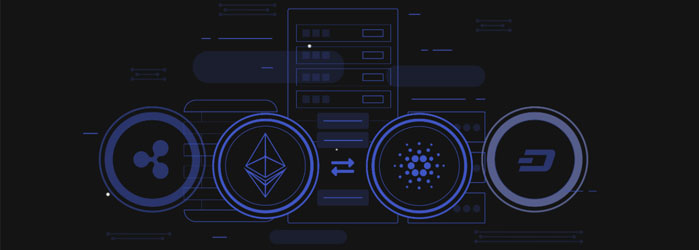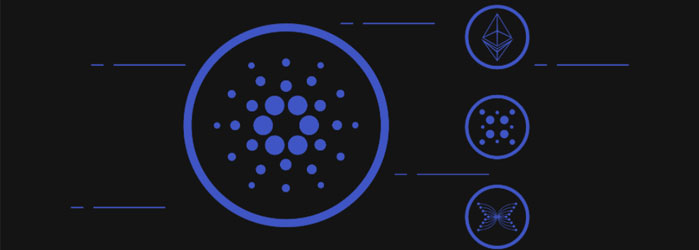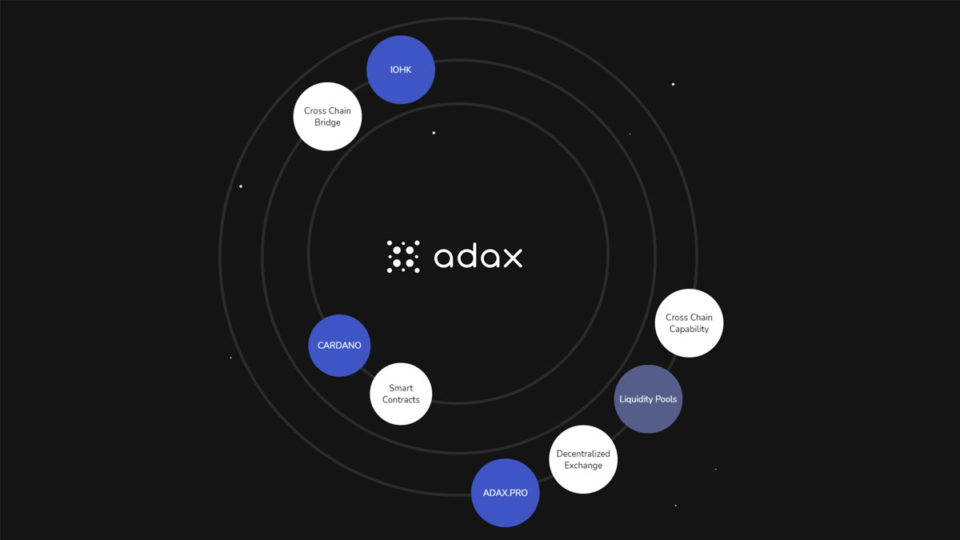ADAX is an automated liquidity protocol for the Cardano blockchain that is a fundamental component for bringing DeFi to this ecosystem. Automated market makers are crucial in creating decentralized exchange platforms, and ADAX can provide all of the needed components for the Cardano ecosystem.
When a protocol like ADAX is deployed on Cardano, we can expect many DeFi products to launch on this blockchain. The result will be a growing community of developers that try to benefit from various features of this blockchain as an alternative for other similar networks.
What is ADAX?
Decentralized exchanges and other DeFi platforms need protocols to manage their trading orders and connect users to each other. In these platforms, there is no centralized organization for managing orders.
In simple terms, there is no order book, and users trade with each other directly. There are numerous benefits for decentralized exchange platforms (DEX). The biggest one is that users have full control over their assets. They won’t worry about censorship or sanctions in their tradings.
Providing this type of freedom needs a robust infrastructure in any blockchain. Cardano aims to become a powerful host for DeFi platforms and needs this infrastructure, too.
ADAX is an automated liquidity protocol that will be deployed on the Cardano blockchain. It facilitates decentralized trades within the ecosystem with numerous features. The completely decentralized non-custodial protocol makes it possible to develop and run decentralized trading platforms. Developers can deploy ADAX and provide full freedom to their users. Traders don’t need to give away their private keys for trading on platforms that run ADAX.
Cardano is one of the most active blockchains in terms of developing infrastructures that support smart contracts. Adding this type of support means developers can create and distribute various types of dApps, among which DeFi platforms are very popular. Protocols like ADAX help these developers create their products easier and benefit from an alternative that is faster and more decentralized.

Solving Market Problems
There are currently numerous AMM protocols being used in various DeFi platforms. Most of them run on the Ethereum blockchain that has their own problems. These problems have resulted in scaling options for Ethereum.
Besides, some blockchains have decided to offer similar services with improved functionality. Cardano is one of them. This blockchain is looking to offer interoperability, too, to create a comprehensive ecosystem for DeFi users.
ADAX is here to provide the necessary tools with improved design and progressive vision. This protocol is designed with a considerable focus on solving big problems in the DeFi sector.
Some of them are:
Markets
The biggest problem for alternatives that try to solve the Ethereum problems is supporting projects that are currently on that blockchain.
Besides, the tokens that are designed based on Ethereum protocols should be migrated to the alternative solution. Using Cardano as the host blockchain for running a dApp needs migrating tokens to the new blockchain.
ADAX provides a Cardano ERC20 converter to solve this issue. As you may know, many DeFi tokens or other tokens used in dApps are developed using the ERC20 protocol. The ADAX converter makes it possible for the token issuers to migrate their ERC20 tokens to Cardano.
After the migration, a new token with a similar use-case and value will be created on Cardano that is especially native in this ecosystem. Besides, users can move their assets back to the previous ERC20 protocol whenever they want.
Liquidity
ADAX has a new model for distributing the fee rewards between liquidity providers. In the current state, there are dynamically changing fee ratios in trading pools. Liquidity providers currently prefer low-volume assets for bigger rewards.
But there is always the risk of impermanent loss in these assets. ADAX has a new model to decrease the risk and make it attractive for all users to provide liquidity for various tokens.
Fees
ADAX’s new fee model offers a 0.3% swap fee distribution for each trade. In simple terms, the fee goes directly to liquidity providers, and there is no platform fee. In this model, 0.175% goes for the taker, and 0.125% goes for the maker.
ADAX Ecosystem
ADAX plans to create an ecosystem for Cardano that answers every need in terms of DeFi services. The ecosystem has all the players from exchange platforms to bridges that make it possible to migrate to the new blockchain.
DEX
A decentralized asset exchange is the first thing you can create with an AMM like ADAX. The ability to trade without the need for any middlemen is very appealing and can surely attract many DeFi users to Cardano.
In the second phase of development and launch in the ADAX roadmap, the swapping platform will be launched. Swapping is the term that is commonly used for decentralized trades in DEXs. According to the roadmap, the platform will be launched in Q3, 2021.
Liquidity Pools
Liquidity pools are fundamental components in decentralized financial platforms. People provide liquidity for pools that are used for decentralized tradings. They receive rewards for their contribution to the platform.
Liquidity pools run based on a special protocol on ADAX that focuses on the most incentive for the LPs. They will be available at the launch of the platform.

Smart Contracts
Cardano releases smart contract support in Q3, 2021. This means developers can deploy their dApps on this blockchain. Protocols like ADAX and Defi platforms will be able to launch and support users, too.
Cross-Chain Bridge
The cross-chain bridge is the fundamental component that helps Cardano support more users. It makes it possible to convert the current ERC20-based tokens to Cardano tokens and trade them in AMMs like ADAX.
There are currently more than 160,000 tokens live on Cardano. With the new bridge, we can expect numerous ERC20 tokens to migrate to this blockchain and add to this number.
Ethereum VS Cardano
Ethereum gave birth to the smart contract concept. This blockchain showed the world that the technology isn’t limited to payments like what Bitcoin offers. It showcased a platform where everyone can build decentralized applications using smart contracts and their protocols.
ERC20 is the most famous standard in the Ethereum blockchain. Currently, more than 400,000 contracts are developed based on this standard. But these big numbers come with problems, too. The Ethereum blockchain is slowing down gradually, and this is the reason we see strong alternatives like Cardano trying to solve the challenge.
The gas fees are going high every day in the Ethereum blockchain. Networks like Cardano have developed better infrastructures that are more scalable. Developers can create their dApps on these blockchains with fewer worries about congestion or increasing gas price (that results in less incentive for users).
Besides, Cardano lets developers and token holders convert their ERC20 tokens to the new protocol and enjoy both the functionality and speed in the new network.
Conclusion
Blockchain like Cardano can solve many challenges we see today in the DeFi sector. The network congestion and increasing gas fees are the biggest problems in blockchains like Ethereum. Cardano offers a scalable solution with similar support for dApps and DeFi platforms.
AMMs like ADAX can show this potential to users. Solutions like ERC20 converters are great in this calculation. They help users move their assets to the new network easier.
ADAX project links
- Web: https://adax.pro/
- Twitter: https://twitter.com/adax_pro
- Telegram: https://t.me/adaxcommunity
- Discord: https://discord.com/invite/GxXNQ9zS8e

